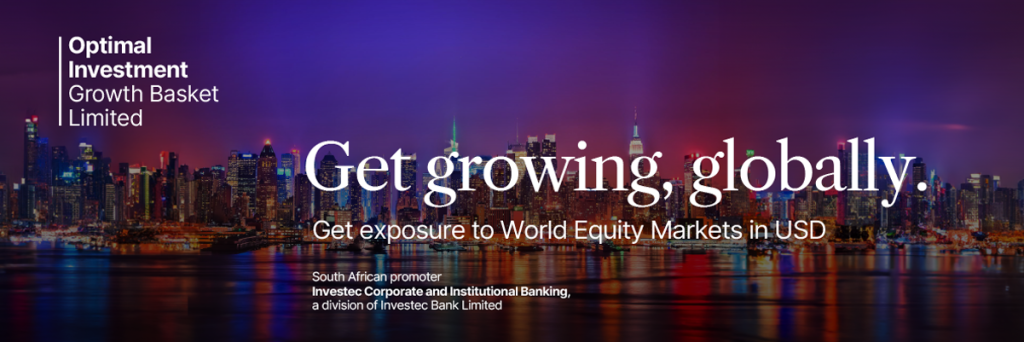Structured products can play a foundational role in managing the long-term and short-term risks while still capturing opportunities in the market.
It is widely accepted that a well-diversified portfolio of equities, bonds and other assets is the best way to preserve and grow wealth over the longer term. Over the long term, equities have been proven to be a particularly good way to deliver inflation-beating returns, thanks to their ability to tap into the key growth themes over time.
While this approach generally works well over time, we all know that in the short term, markets can be subject to extreme fluctuations. Buy into the market at the top of the cycle and you risk losing a big portion of your initial capital in the event of a major drawdown. Buy at what you think is the bottom of the market and you sometimes end up waiting a long time for your view to be realised.
These questions are pertinent at the moment. There are exciting longer-term secular trends under way that are likely to define the expected outcome over the next few years. At the same time however, there are many short-term/cyclical dynamics at play that could disrupt this exciting outlook.
How can a financial adviser tap into these longer-term growth themes while at the same time help clients to navigate the potentially severe volatility of markets over the short term? Before answering these questions, let’s summarise the long and shorter-term themes investors are dealing with at the moment.
The longer-term trends include the following:
- Artificial intelligence (AI), in particular generative AI and other advances in technology. We have already seen the AI theme supporting the tech sector this year. The latest buzzword is the “Magnificent Seven” (Alphabet, Amazon, Apple, Meta, Microsoft, Nvidia and Tesla), which together have a larger market cap than the stock markets of the UK, Japan, France and China combined.
- Demographics and shifts in global wealth. Led by China, India and other Asian economies, many people have been lifted out of poverty in recent decades. While this process will continue in the coming years, it will also be complicated by the phenomenon of ageing and shrinking populations in Europe and the Far East, and China in particular. At the same time, countries in South Asia, the Middle East and Sub-Saharan Africa will continue to grow their populations. These shifts will have a number of implications for growth, investment and innovation in the coming decades.
- Climate change, the environment, and the energy transition. Communities around the world will have to deal with the impact of climate change, while also having to make large investments in mitigating against it and moving away from fossil fuels. What will this mean for demand for commodities and new technologies and what will the costs be?
Over the shorter term, we see the following issues in play:
- A potential peak in global interest rates, most notably in the US. While the US has guided for a peak in rates later this year, it recently told markets that it expects rates to come down more slowly next year. This has serious implications for bond yields, which in turn has implications for technology shares, which are geared towards changes in bond yields. It also has implications for indebted governments, businesses, and households, all of whom will want some relief from the costs of servicing their debt.
- A sluggish recovery in China. The rebound expected after the lifting of Covid-19 restrictions earlier this year has not yet materialised. Business and consumer confidence remains low, while there are concerns about the health of the highly indebted property sector. It remains unclear how much the Chinese government will intervene to support a recovery.
- A tighter oil market as a result of major producers Saudi Arabia and Russia committing to reduce production this year. This has seen benchmark oil prices rise by about 30% between mid-June and late September.
Equity investors will continue to try to tap into these key long-term trends to create value for investors. However, as we highlight above, short, and medium-term effects can have a major impact on the value of investments. Market drawdowns can set back your ambitious investment plans and it can take years to recover the value that is lost. For example, it took over 17 years for the Nasdaq to recover to the level it was at before the tech crash of 2000. While a few lucky investors would have been able to call the bottom for the Nasdaq after the crash, many others would have bought at close to the top and seen a significant destruction of their capital.
It’s here where a financial adviser can access some of the investment technology that’s available out there to manage risk and to participate in some of the long-term themes – notably through structured products.

Structured products are typically designed with exactly these requirements in mind. Investors will get exposure to an underlying asset or index, while also enjoying a degree of capital protection over the life of the product.
The upside is often geared – where investors get a multiple of the growth in the index, up to a certain level – while many structured products provide 100% protection of the initial capital.
Each product will have its own features, but, given the broad parameters above, they can be a powerful tool in any financial planning armoury. Whether as means of investing in the market, without having to worry about the minutiae of stock selection, or as a tactical tool to be used as part of a balanced portfolio to mitigate risk, structured products have a key role to play in building a robust portfolio in exciting, but volatile, markets.
An example of a Structured Product offering is Optimal Investment Growth Basket Limited (“Optimal”). Investec Corporate and Institution Banking, a division of Investec Bank Limited is the South African promoter of Optimal. The investment offers 100% capital protection in US dollars (USD) at maturity (subject to credit risk), and it provides 150% geared exposure to world equity markets up to a maximum return of 60% over the term of approximately 5 years (equivalent to a maximum of 9.8% p.a. in USD).
Learn more here or listen to Episode 22 of Ghost Stories in which Japie Lubbe of Investec Structured Products spoke to The Finance Ghost about this opportunity:
Applications close 24 November 2023.
Disclaimer: https://www.investec.com/en_za/legal/structured-products-disclaimer.html



